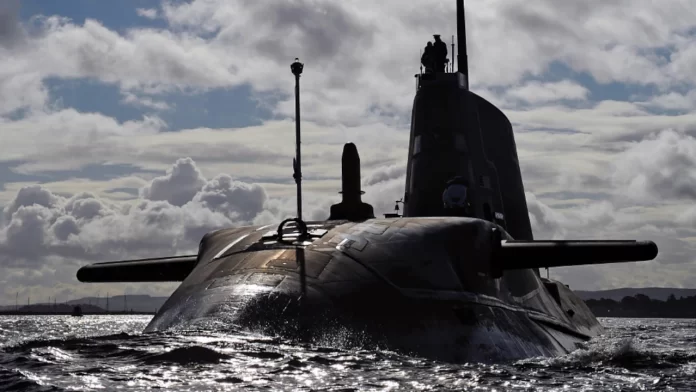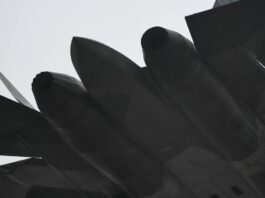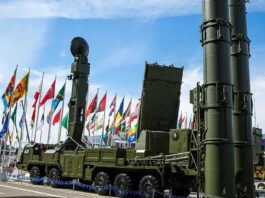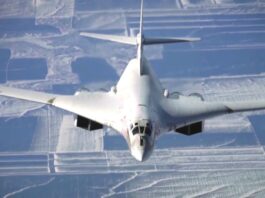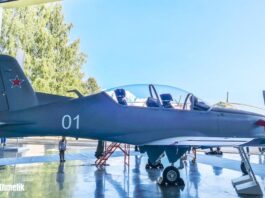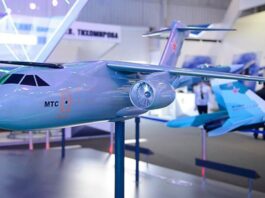The Guardian reports that British Prime Minister Rishi Sunak wants Australia to choose nuclear submarines manufactured in Britain rather than those manufactured in the United States. The Times, quoting the director of the Australian National University’s Center for Strategic and Defense Studies, also reported on March 7 that Australia would obtain nuclear submarines from the United Kingdom rather than the United States.
John Blacksland, the chairman of the Australian National University’s Center for Strategic and Defense Studies and one of Australia’s foremost defence specialists, said that Australia would purchase British-made nuclear submarines as a stopgap measure until it could construct its own.
According to Blacksand, Australia prefers smaller British submarines. Blacksand argues that the United States produces large boats, but their production line is busy, whereas the British version is smaller and easier to operate. Crew size is a crucial constraint for Australian submarines, which have crewing problems even on the considerably smaller Collins class.
He noted that a pair of submarines off the U.K.’s manufacturing line might be a lifeline for its naval construction industry and an assurance to the Albanian government that submarines would be delivered before the decade’s end.
Astute-class submarines are nuclear-powered assault submarines (SSN) designed and constructed for the Royal Navy. The first vessel entered service in 2010, making them the most modern submarines the Royal Navy has ever operated. The Astute-class submarines measure 97 metres in length, 11.3 metres in width, and 10 metres in depth. They have an approximate submerged displacement of 7,400 tonnes and are fueled by a nuclear reactor, allowing them to remain submerged for extended periods without refuelling. Submarines of the Astute class have a maximum speed of over 30 knots (35 miles per hour or 56 kilometres per hour) and a dive depth of over 300 metres. These submarines are outfitted with sophisticated weaponry, such as torpedoes, Tomahawk land-attack missiles, and the most recent Spearfish heavyweight torpedoes. In addition, they possess an array of sophisticated sensors and communication systems that enable them to collect and transfer information without being discovered. Submarines of the Astute class are designed to be exceptionally silent, making them particularly effective in anti-submarine warfare. They are also equipped with a unique coating that absorbs sound and a propulsion system that generates less noise to diminish their acoustic signature. The Royal Navy has received seven Astute-class submarines as of 2023, with three more currently under construction. The Astute-class submarines are anticipated to stay in service with the Royal Navy for at least 30 years.

The Australian Minister of Defense spokesman, Richard Marles, downplayed the leak, stating that the ideal path for Australia to acquire nuclear submarines is emerging and that an announcement is expected in the first half of this year. In March, the Australian government will reveal whether it intends to purchase nuclear submarines from the United States or the United Kingdom.
On March 8, Australian Prime Minister Anthony Albanese will visit the United States. He will be joined by U.S. President Biden and British Prime Minister Rishi Sunak at the second largest naval facility of the U.S. Navy in San Diego. At the conference, it is expected that a decision will be made regarding which submarines Australia would purchase as part of the AUKUS defence pact.
According to an unnamed minister, Sunak expressed his satisfaction with the outcome of the 1.5-year talks with cabinet colleagues. The deal clearly favours the United Kingdom. According to a source, the prime minister was ecstatic when he told the ministers, smiling and jumping up and down.
According to sources, the United Kingdom is prepared to sell Australia two Astute-class nuclear submarines, HMS Agamemnon and HMS Agincourt, which are expected to be completed in 2024 and 2026.
The Sun earlier stated that Sunak’s administration had negotiated an agreement in principle to equip the Royal Australian Navy with nuclear submarines developed and at least partially constructed in the United Kingdom, each worth approximately £2 billion.
While negotiations continue, according to a government spokesman, the British government will not prejudge the conclusion of the current review period, which is being used to determine Australia’s capacity requirements.
Contradicting claims
The newspaper’s information contradicts that of the Reuters news agency, which had previously stated that Australia intends to purchase up to five US Virginia nuclear submarines. As per the source, Australia will purchase three submarines of the Virginia class and will have the option to purchase two more. It was revealed that in December of the previous year, U.S. Secretary of Defense Lloyd Austin instructed the Biden administration to guarantee that Australia receives nuclear submarines as quickly as practicable.
The Virginia-class submarine is a class of nuclear-powered, rapid assault submarines (SSN) constructed for the U.S. Navy. With the first vessel entering service in 2004, they are the Navy’s newest and most technologically advanced class of submarines. The Virginia-class submarines measure 377 feet (115 metres) in length, 34 feet (10.4 metres) in beam, and 32 feet (9.8 metres) in draught (9.8 meters). They have an approximate submerged displacement of 7,800 tonnes and are fueled by a nuclear reactor, allowing them to remain submerged for extended periods without refuelling. Submarines of the Virginia class have a maximum speed of over 25 knots (29 miles per hour or 46 kilometres per hour) and a diving depth of over 260 metres (over 800 feet) (244 meters). These submarines are outfitted with sophisticated weaponry, including torpedoes, cruise missiles, and unmanned underwater vehicles. In addition, they have sophisticated sensors and communication systems that enable them to collect and transmit information without being detected.
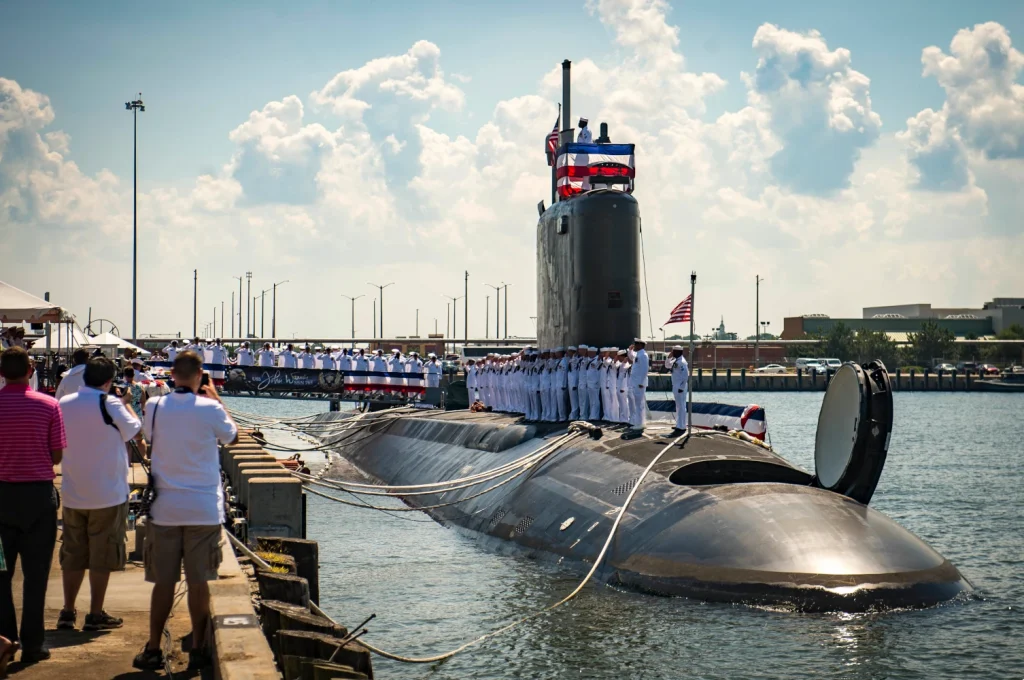
Peter Dutton, former Australian defence minister and current opposition leader, stated last week that he was informed as defence minister that British submarines were causing issues. They include a lack of manufacturing capability in the United Kingdom and concerns regarding the compatibility of the submarines with those built in the United States, Australia’s closest defence ally.
A compromise submarine
Bloomberg notes that this is a longer timeline for British submarines, as this project is still being developed. Sources concur that the final design of the submarine will rely heavily on U.S. technology.
According to the U.S. website Breaking Defense, the alternative is for the leaders to proclaim the employment of British nuclear reactors and American-made boats.
AUKUS and Australian nuclear powered submarine project
Australia, the United States, and the United Kingdom announced the formation of the AUKUS cooperation in the fall of 2021. The agreement provides for arming Australians with a fleet of nuclear submarines based on British and American technologies. Concurrently, a contract with France to deliver 12 attack submarines of the Barracuda class to Canberra for 56 billion euros was cancelled.
According to prior reports, Australia would be ready to launch its first nuclear-powered submarine at the end of the 2030s. As Australia’s Collins-class diesel submarines are decommissioned in the 2030s after 33 years of service, the country’s defence will confront a significant capability vacuum.
Astute Class versus Virginia Class submarines
The Astute-class and Virginia-class subs are modern nuclear-powered assault subs developed for their respective militaries. Despite their similarities, there are some major distinctions between the two kinds of submarines.
Their size and dimensions are a huge distinction. Submarines of the Virginia class are longer than those of the Astute class, measuring 115 metres compared to 97 metres for the Astute class. Yet, the Astute-class submarines have a wider beam and a deeper draught, granting them superior stability and depth capabilities.
In addition, their propulsion systems differ. While nuclear reactors fuel both submarines, the Virginia-class submarines have a slightly different propulsion system that enables them to travel faster than the Astute-class submarines.
Both kinds of submarines are equipped with advanced weapon systems, including torpedoes and missiles, in terms of weaponry. But, Virginia-class submarines are also capable of transporting and launching special operations forces, giving them capabilities beyond those of conventional submarine warfare.
Lastly, the sensor and communication systems of the two classes of submarines are distinct. Submarines of the Astute class feature a more modern sonar system, whereas those of the Virginia class have a more advanced communication system that enables better cooperation with other naval assets.
The Astute-class and Virginia-class subs are highly powerful and advanced vessels built for modern naval combat. These distinctions reflect the distinct requirements and priorities of their navies.
